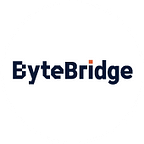Traffic Light Object Recognition and Annotation Project
We all know the principle of “stop at the red light, go at the green light” since we were little kids, how to make the driverless car follow the rules as well?
The key lies in the autonomous driving algorithm to recognize such objects. We need to tell the vehicle what the big signal lights are and how to operate when encountering different signal lights.
Scalable, different types of signal light in different states are basic materials for algorithm learning.
In addition, the training data of signal lights under different weather and light are indispensable for algorithm updating. Once the driverless vehicle encounters some scenes never seen before, it is highly likely to cause an accident and threat personal safety.
Let’s take a look at a traffic signal project labeling project.
Project Overview
All traffic lights, portable traffic lights, timers, road traffic lights, flashing warning lights, non-vehicles, and crossing traffic lights in the front view are labeled with 2D bounding boxes appropriately.
Basic definitions
- Object types:
- Color category: green, red, yellow, colorless
- Shape category: arrow-shaped, circular, water-filled, top left, top right
- Direction: vertical, horizontal
- Traffic light category: vehicle, non-vehicle, crossing traffic light, flashing warning light, road traffic lights, flashing warning lights, timer, and railroad crossing lights
- Time: daytime, night
- Scenario: rainy, cloudy, sunny, snowy, foggy, sandy, and backlight
2. Examples of object types
- Traffic lights for vehicles: circular lights horizontally and vertically, arrow-shaped lights, and water-process lights
- Non-vehicle traffic lights:
- Crossing traffic lights
- Timer: mainly divided into 3 kinds including timer lights hanging alone, those nested in the light, and those below the light
Annotation requirements
Draw a box as closely and accurately as possible along the outline of the object; label all the traffic lights within reach of the front view. Only label the front light lights and lateral lights, excluding backward ones.
- Labeled targets
All traffic lights within the field of view. Labeling results include
- Bounding box
- Label category
2. Labeling form
(1) Outline of the object: All traffic lights in the images should be labeled with a 2D bounding box. It is not necessary to label traffic lights with an occlusion part of more than 60% and traffic lights with the shortest side of less than 10 pixels. It is required that all traffic lights in the image that meet the requirements should be marked.
(2) Category:
- Type
- Shape
- Color
- Direction
3. Category specification
1) Type
- Vehicle
- Non-Vehicle
- Crossing
- Timer
2) Shape
- Circle
- Water-process
- Left-arrow
- Right-arrow
- Turn-arrow
- Straight-arrow
3) Color
- Green
- Red
- Yellow
- Colorless
4) Direction
- Horizontal
- Vertical
Output
End
Outsource your data labeling tasks to ByteBridge, you can get high-quality ML training datasets cheaper and faster!
- Free Trial Without Credit Card: you can get your sample result in a fast turnaround, check the output, and give feedback directly to our project manager.
- 100% Human Validated
- Transparent & Standard Pricing: clear pricing is available(labor cost included)
